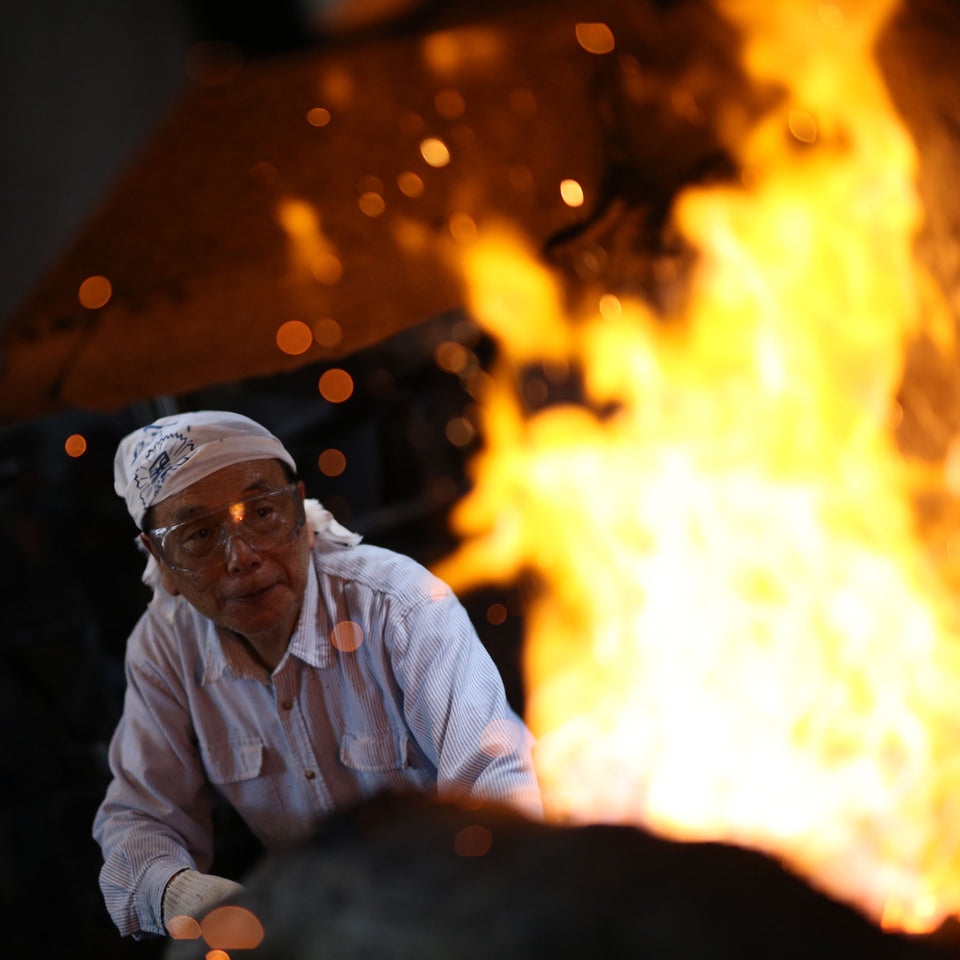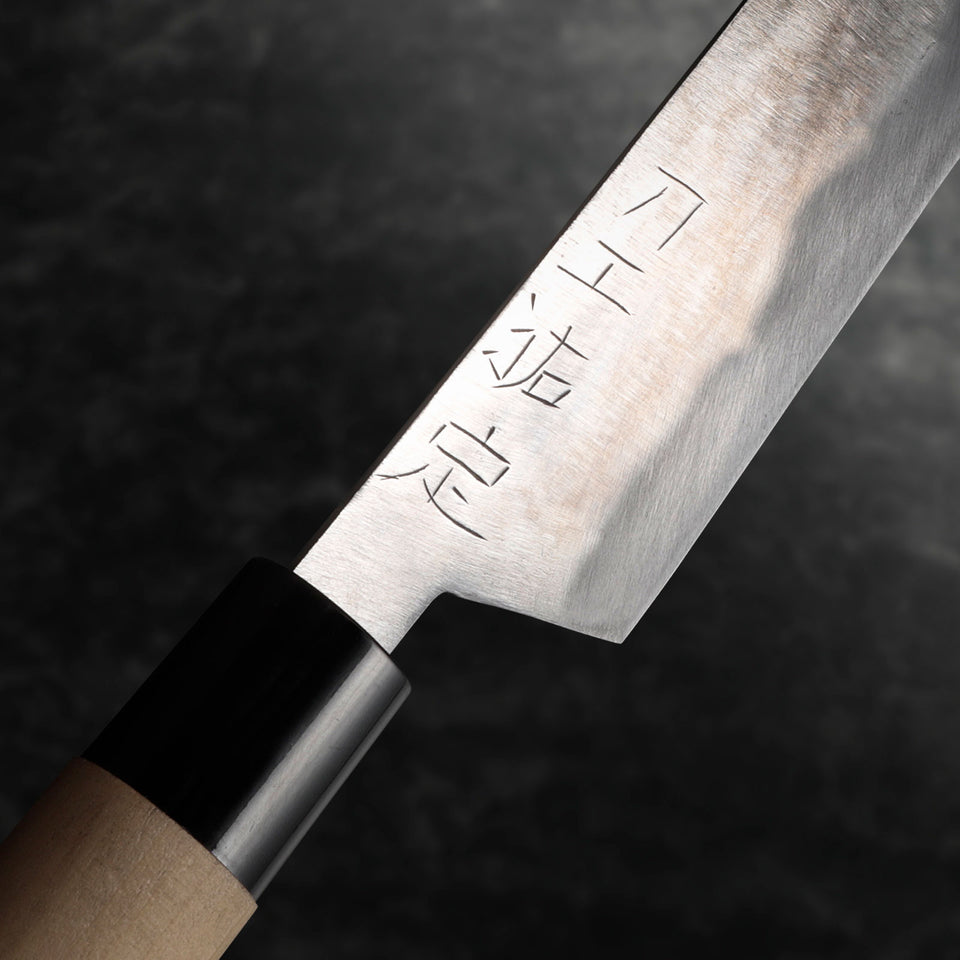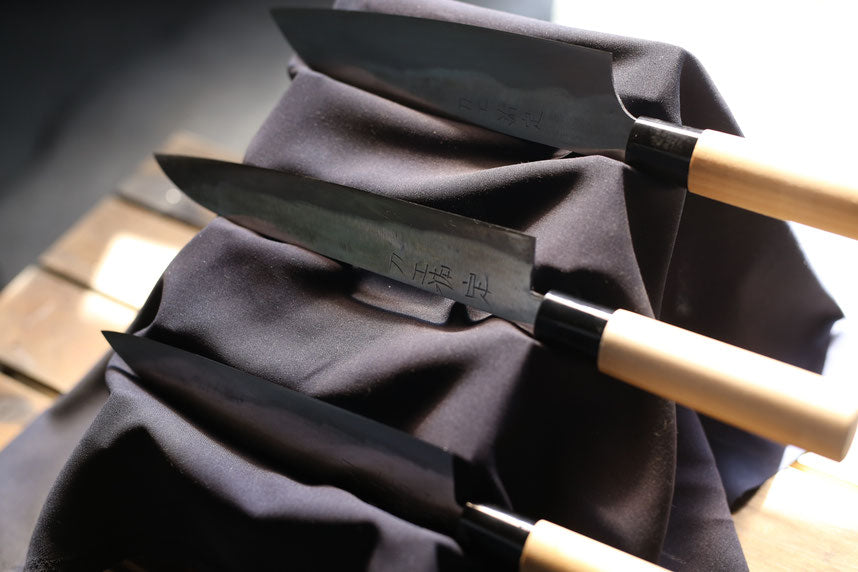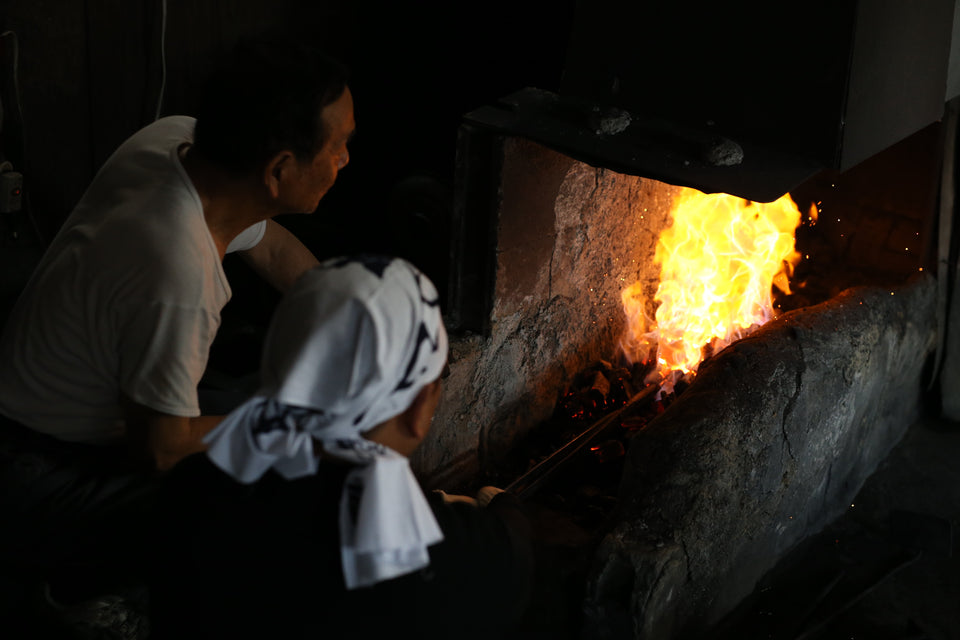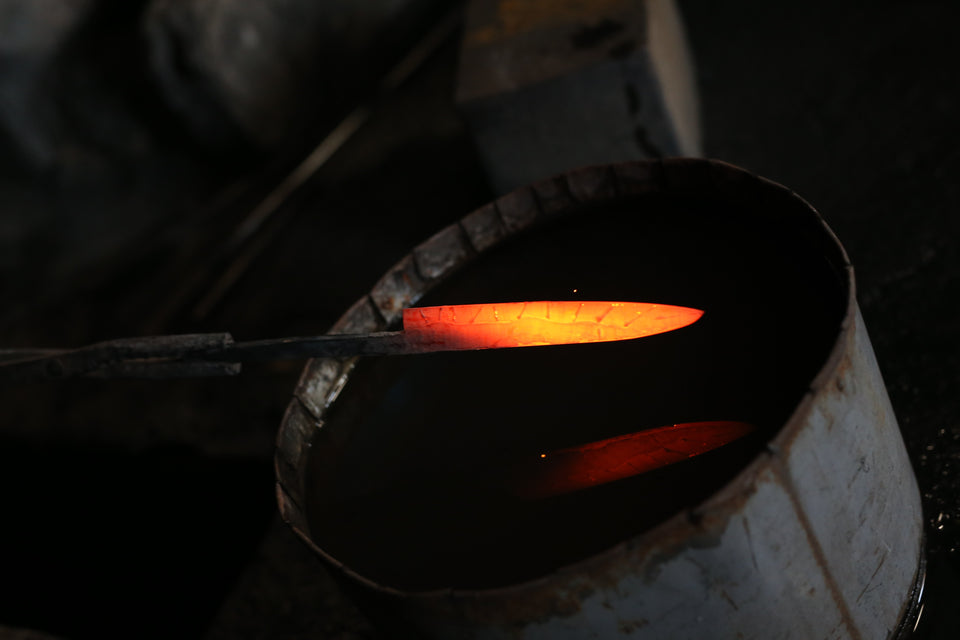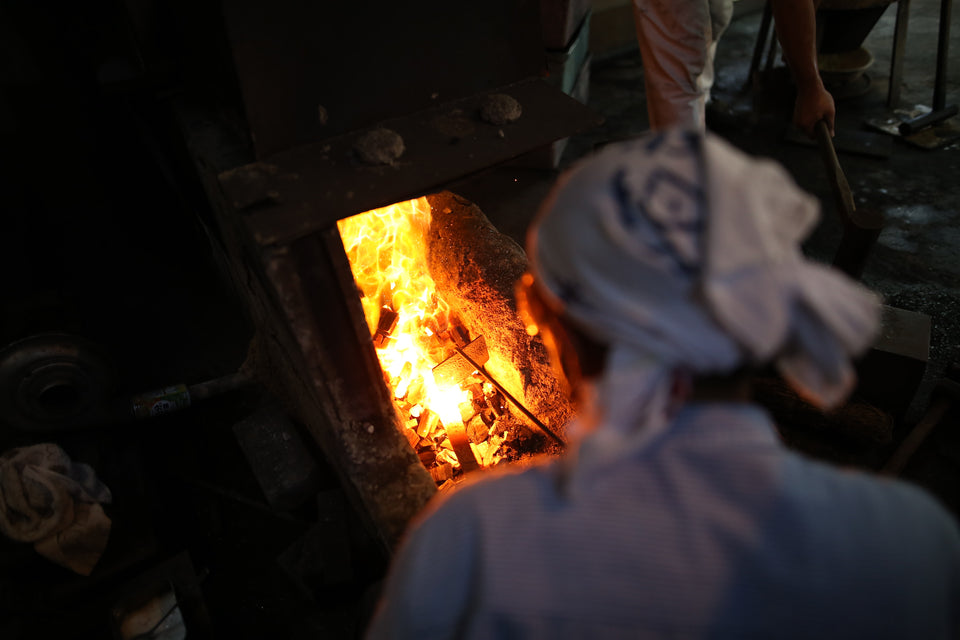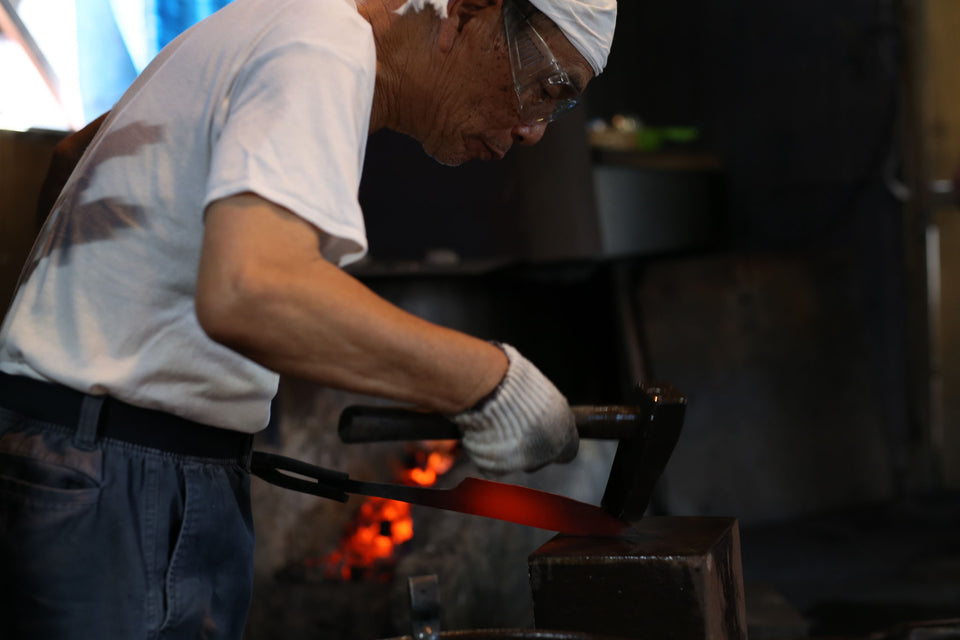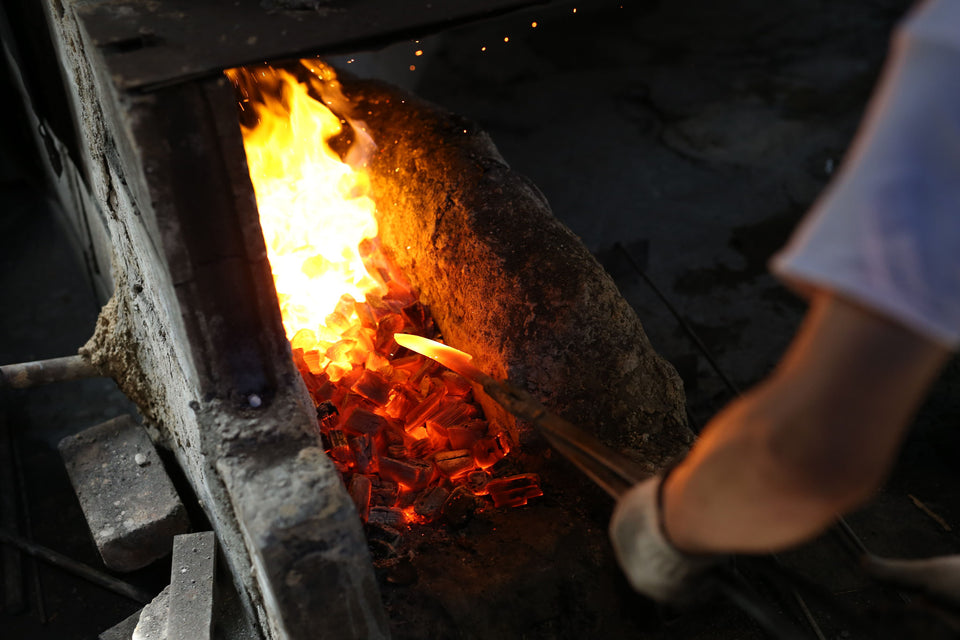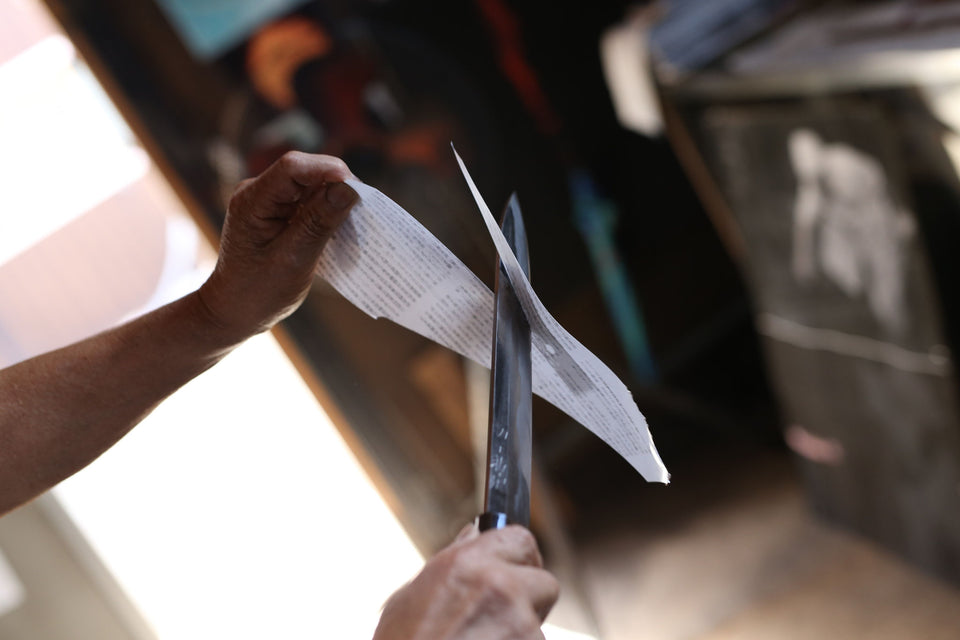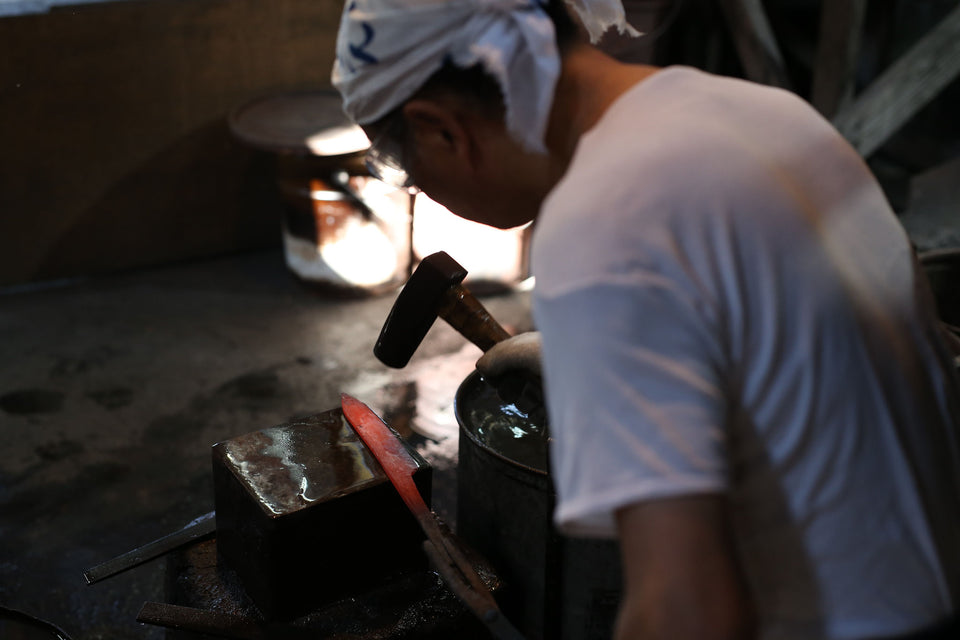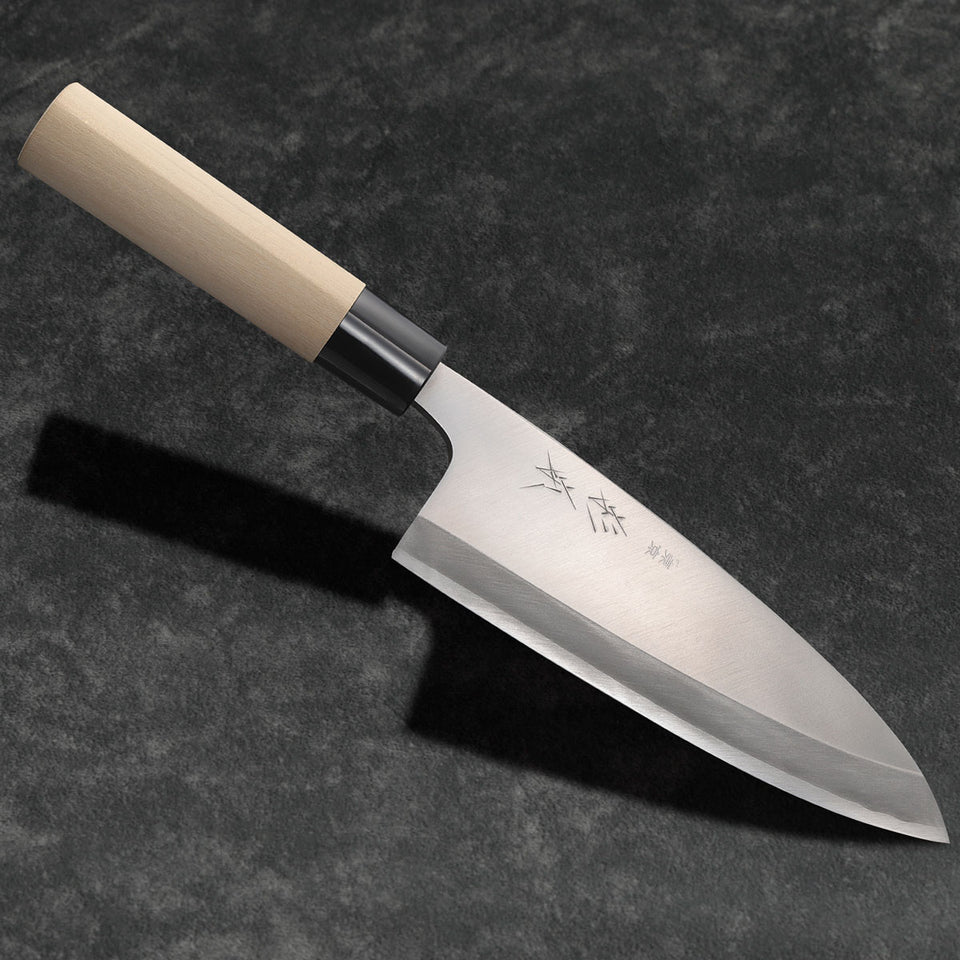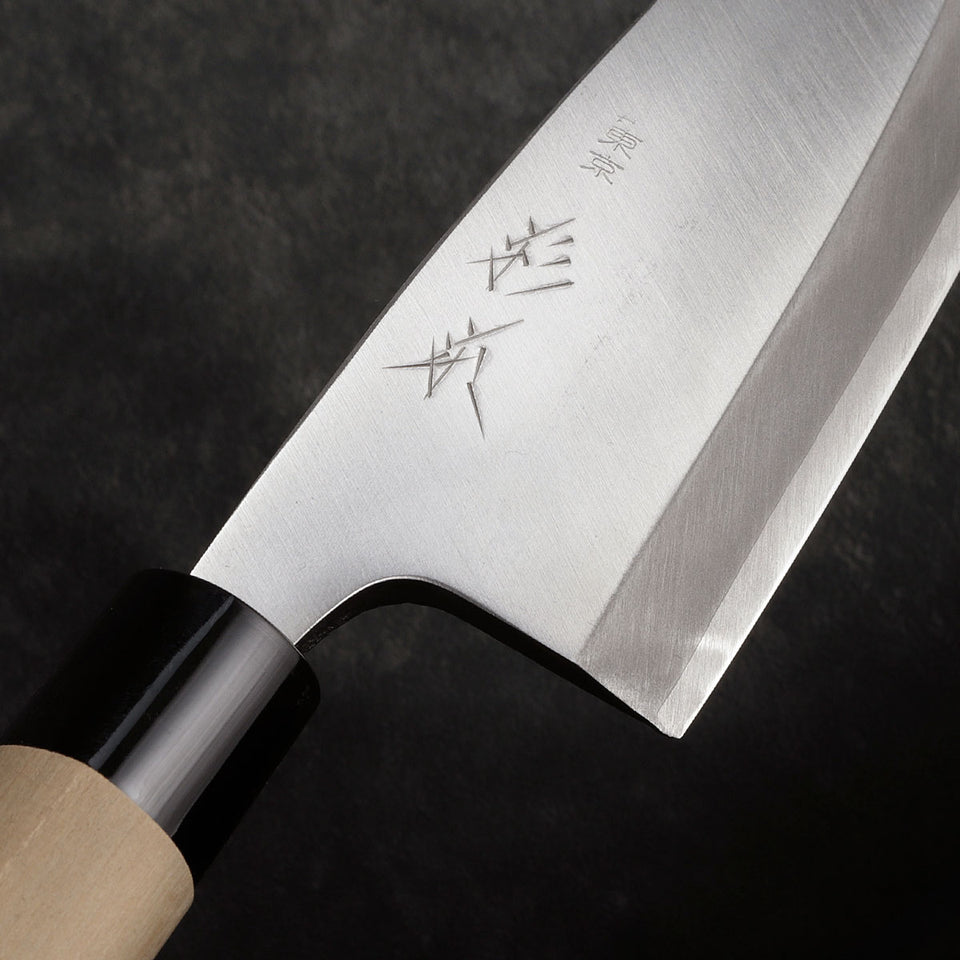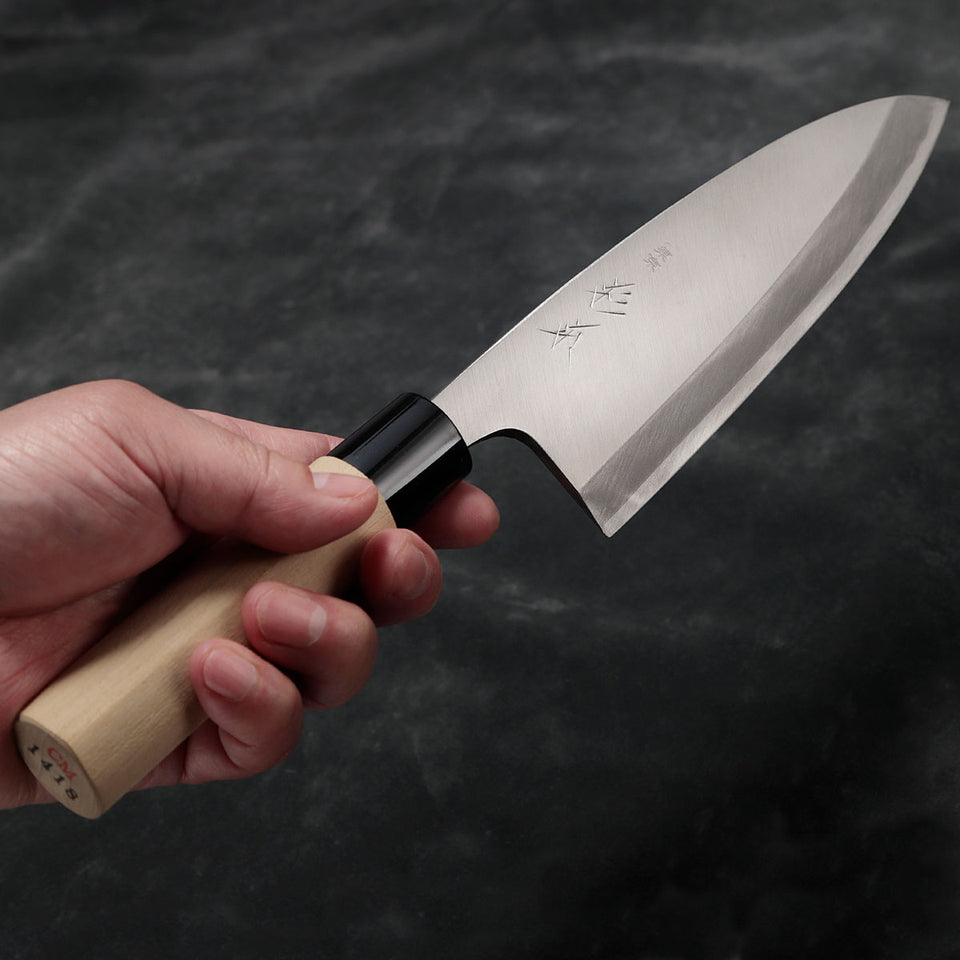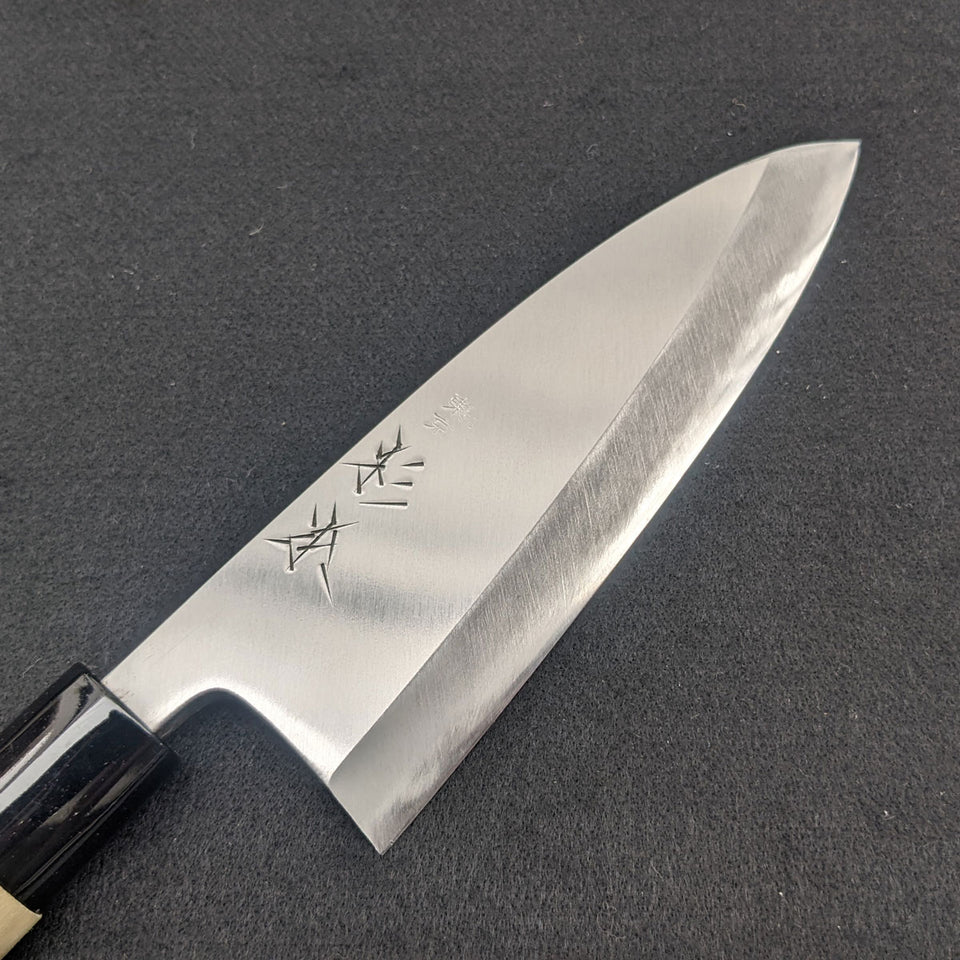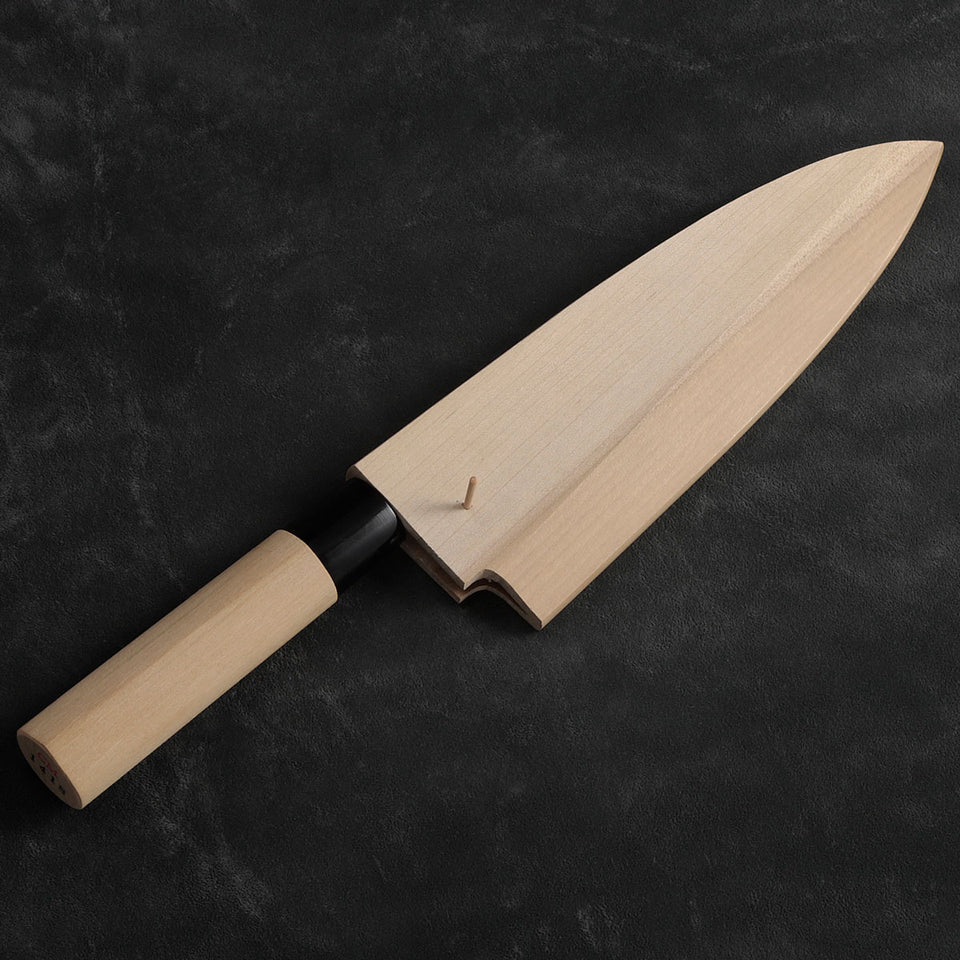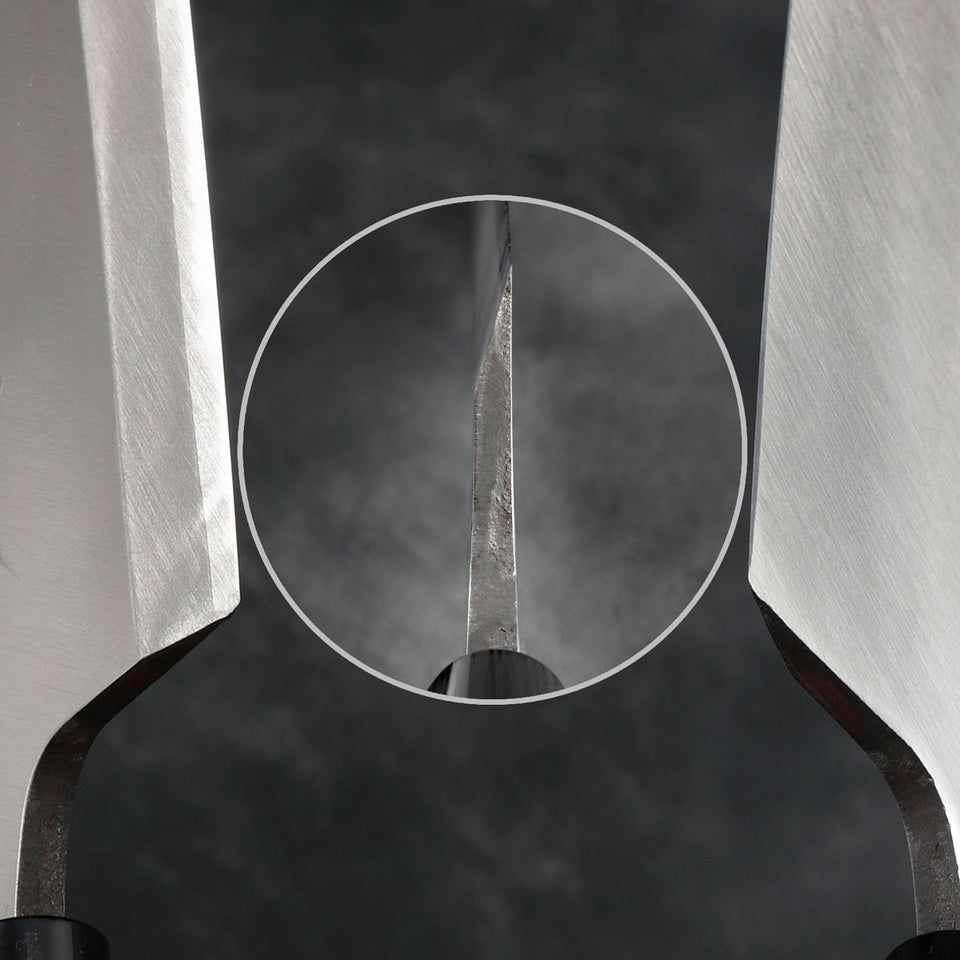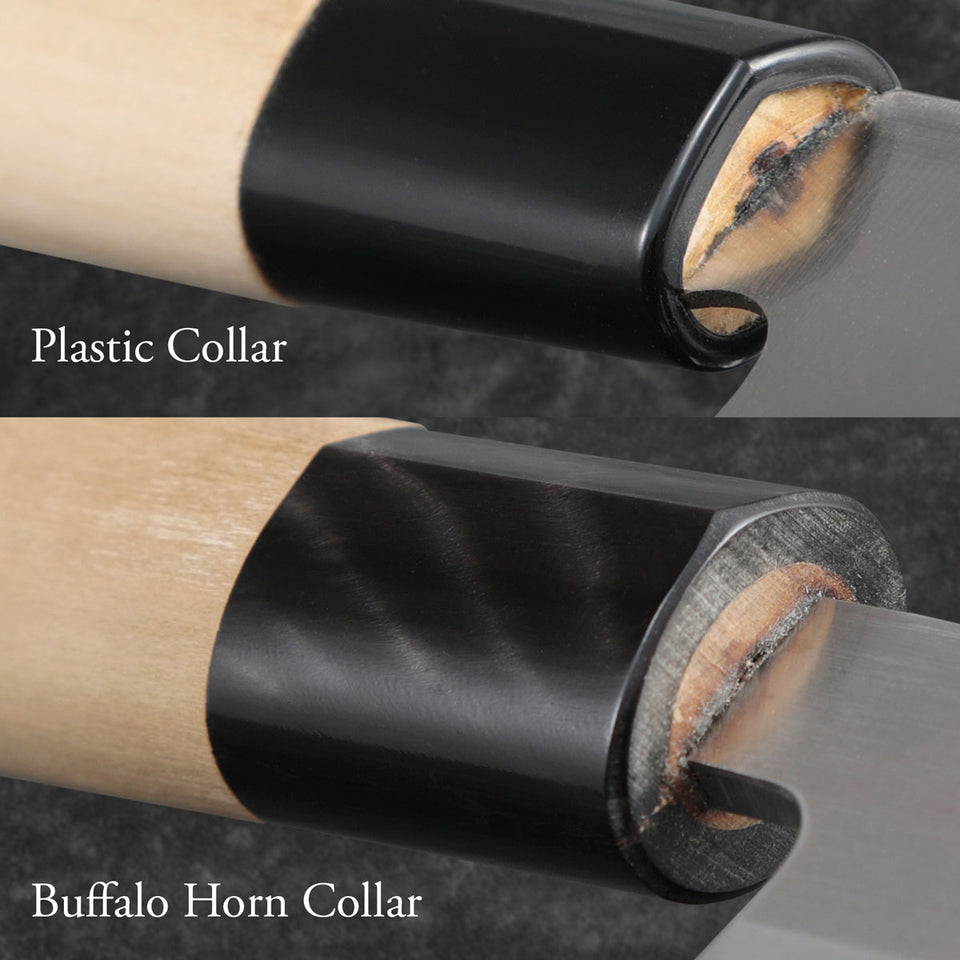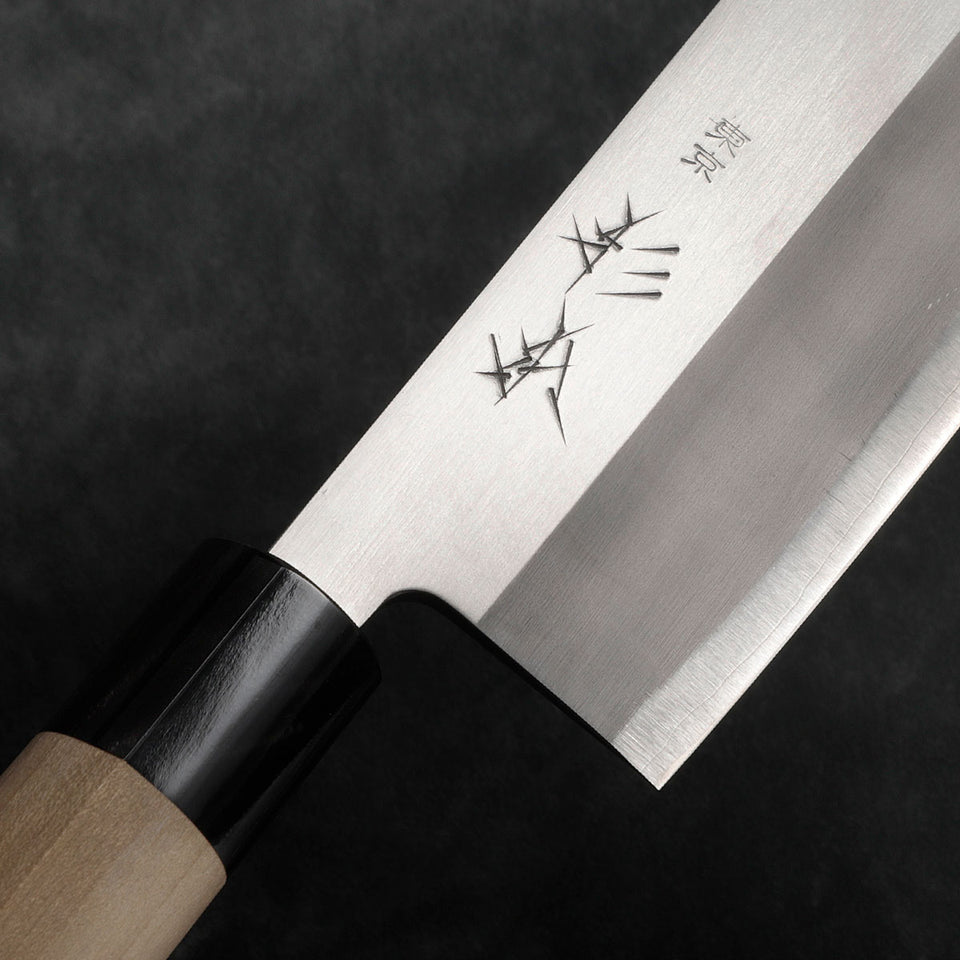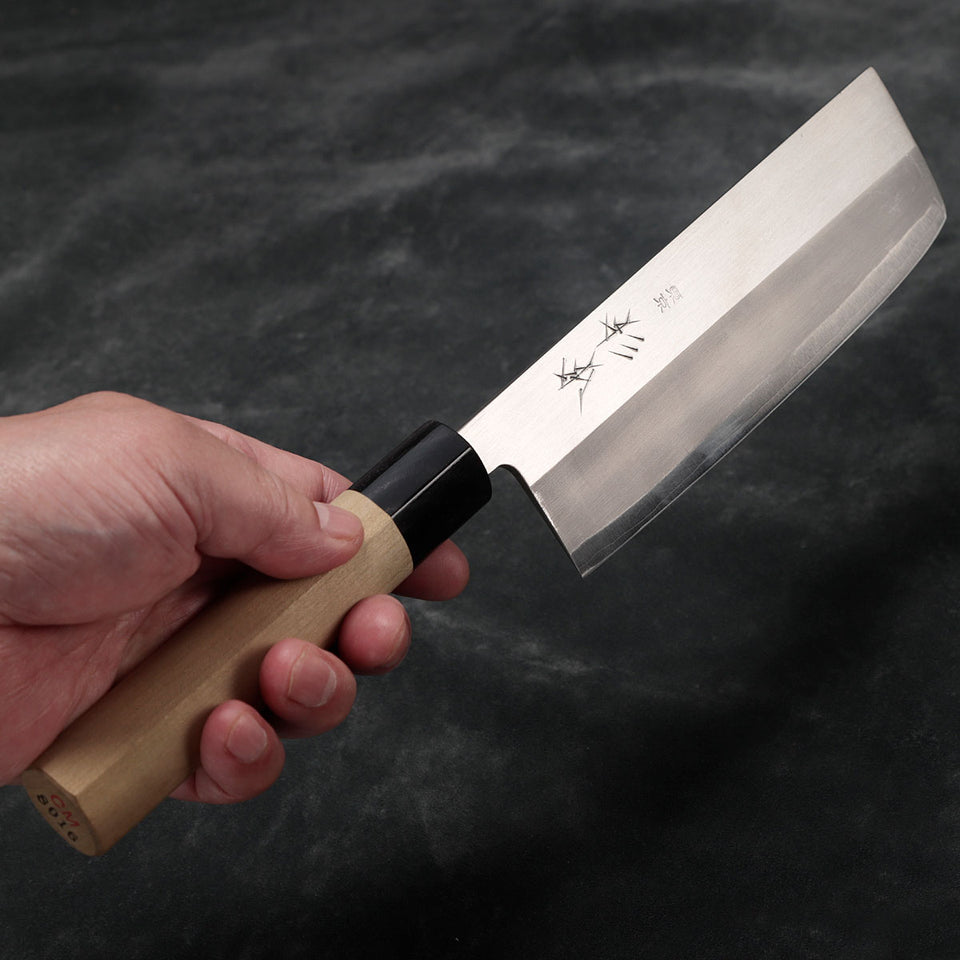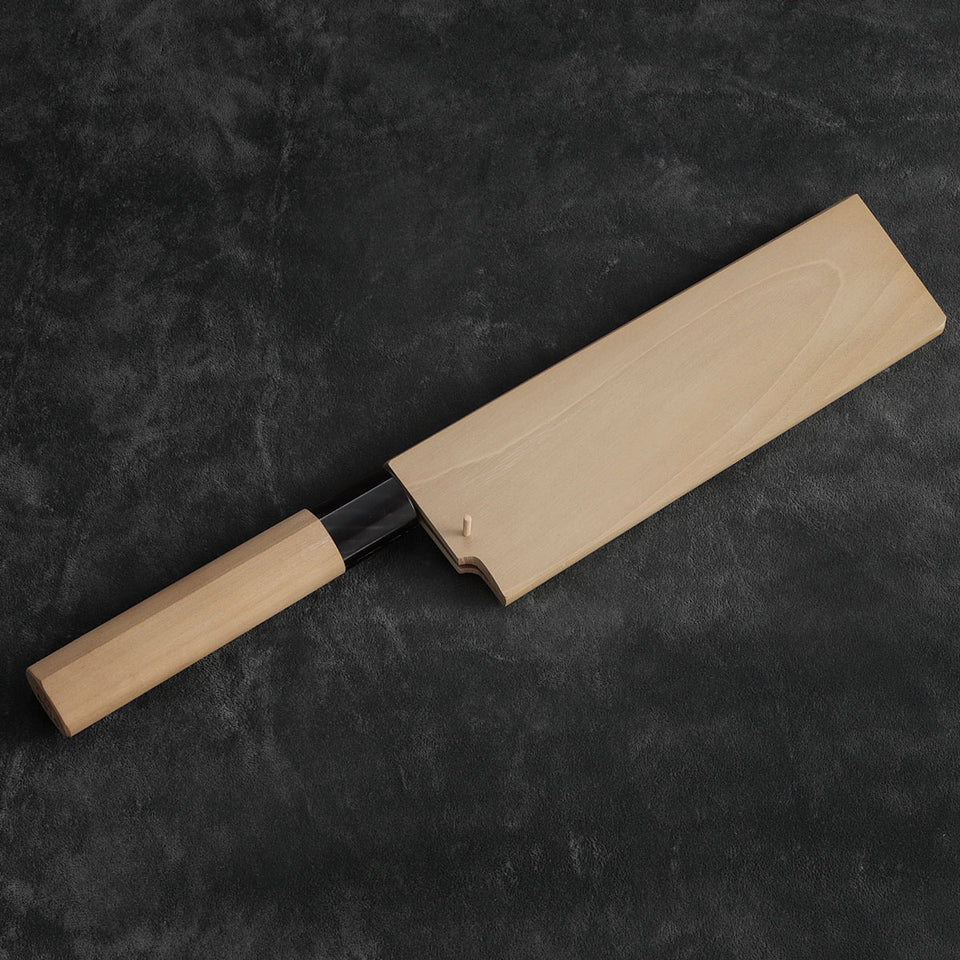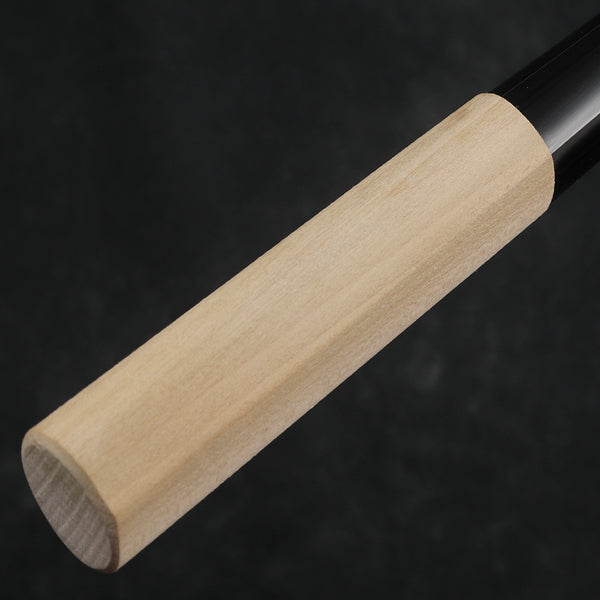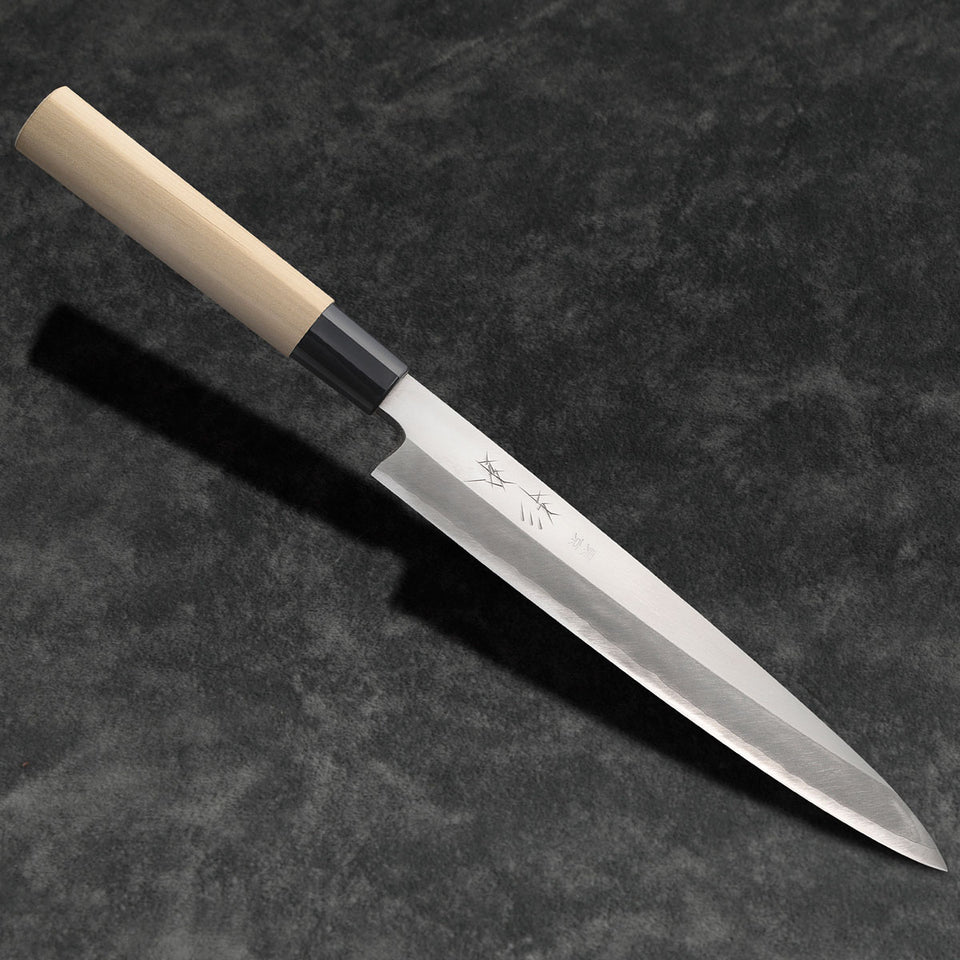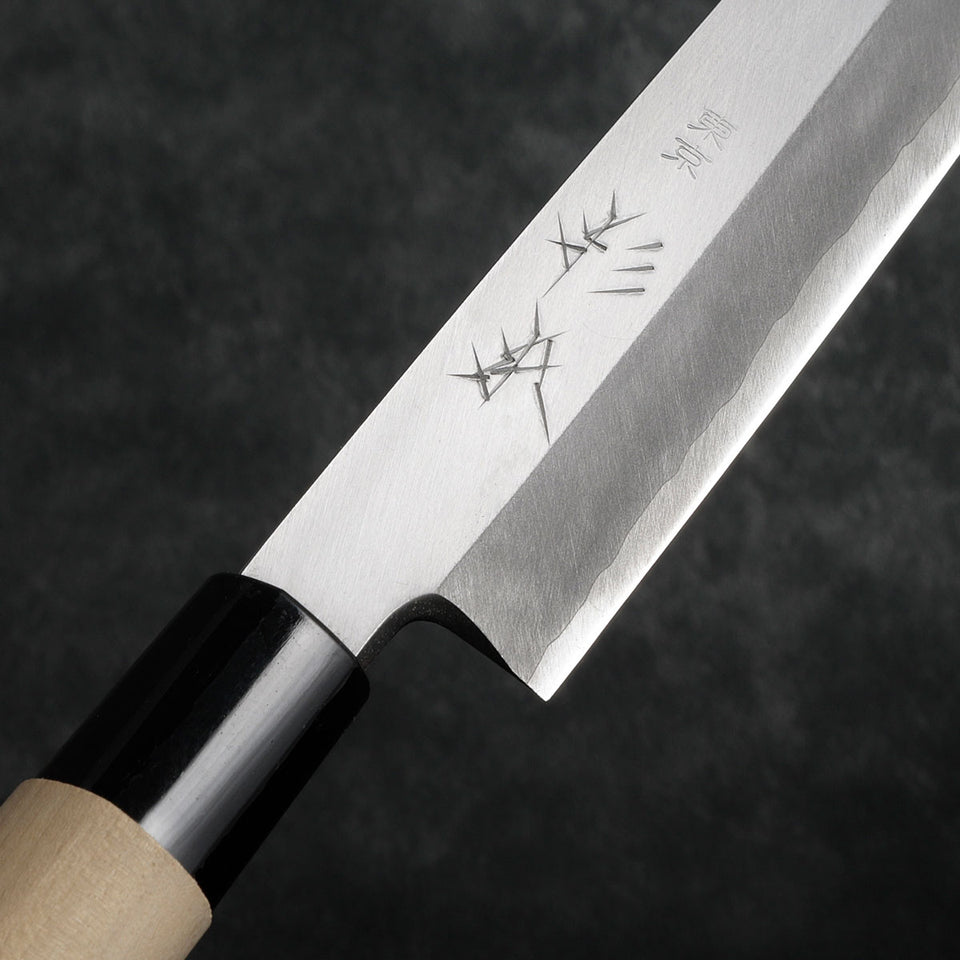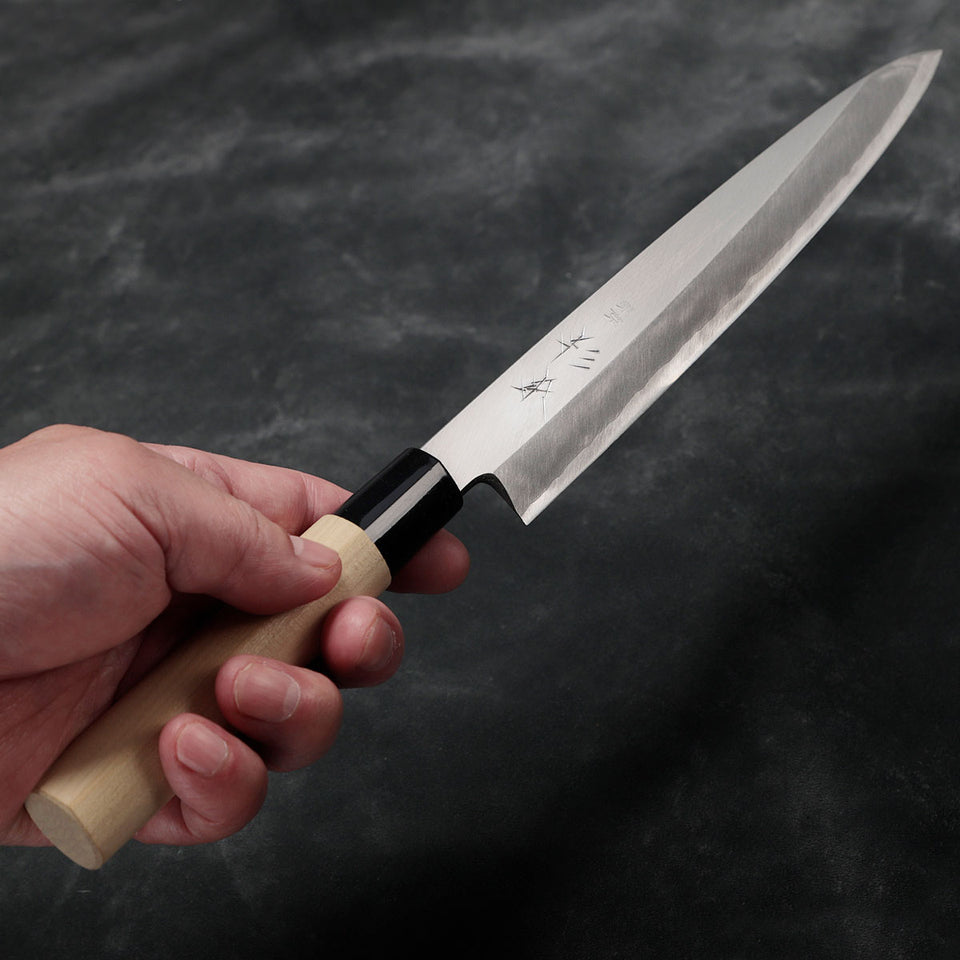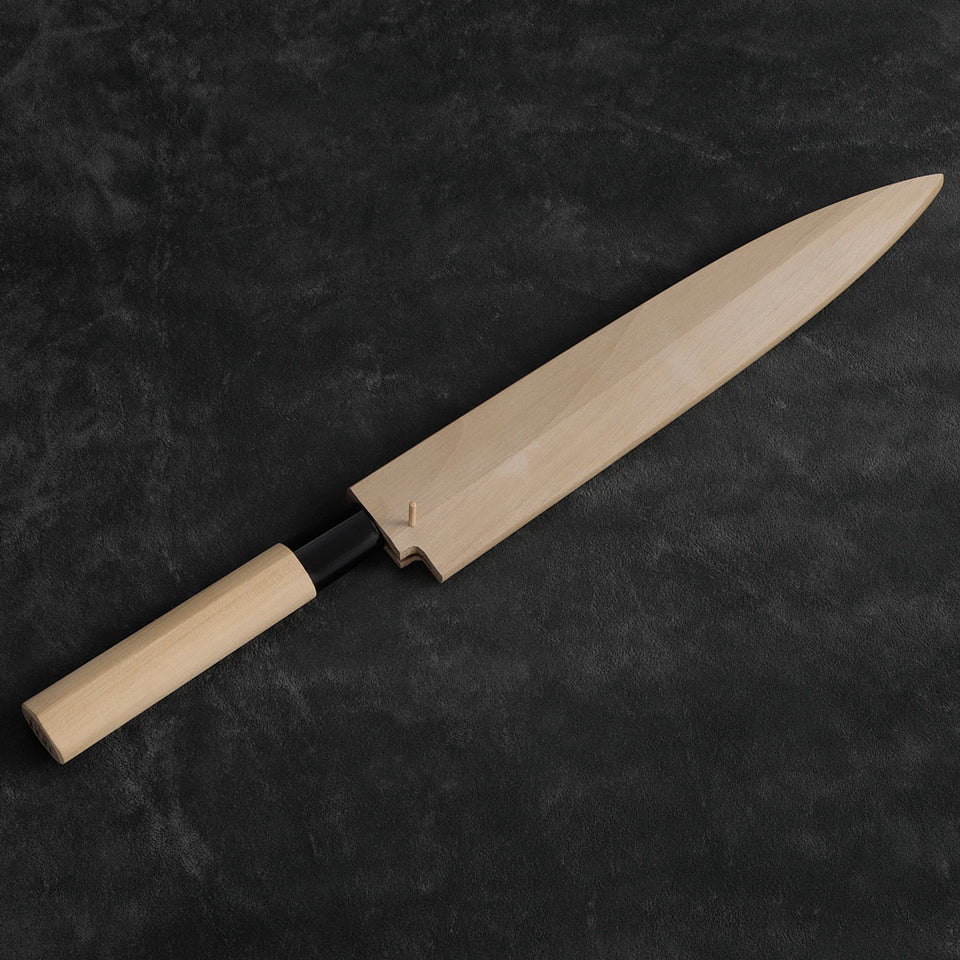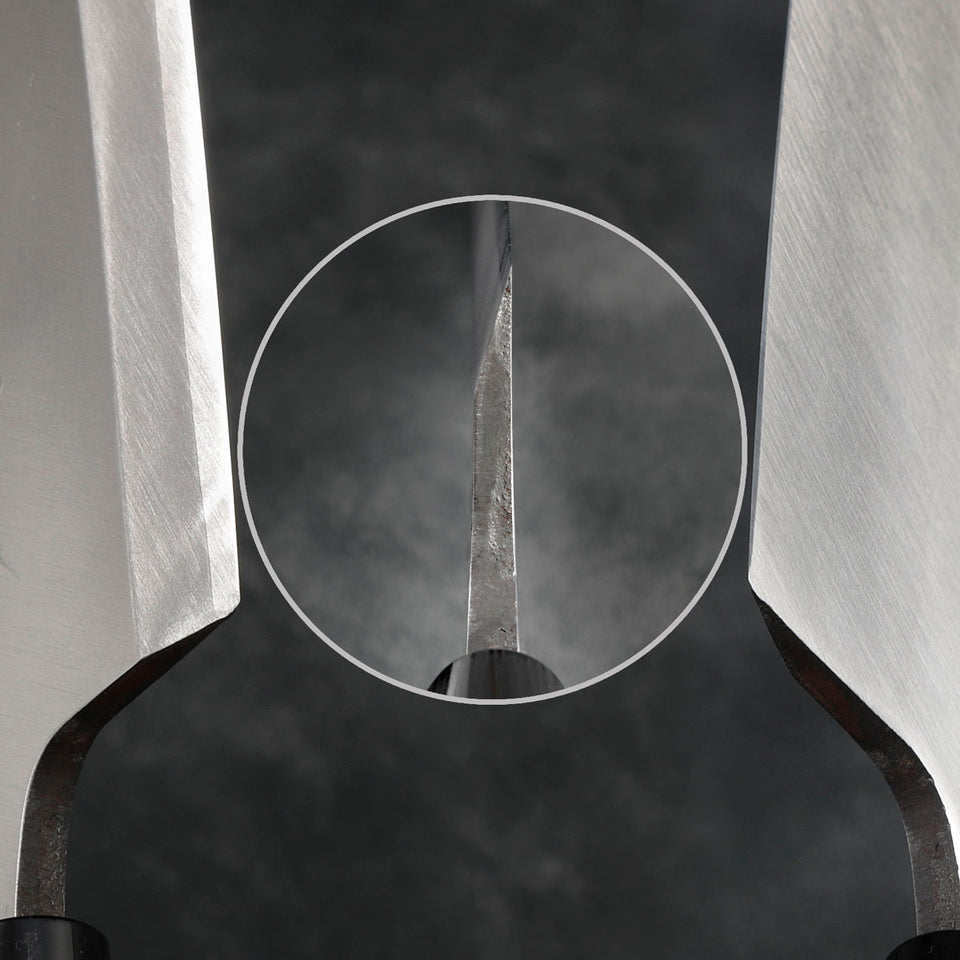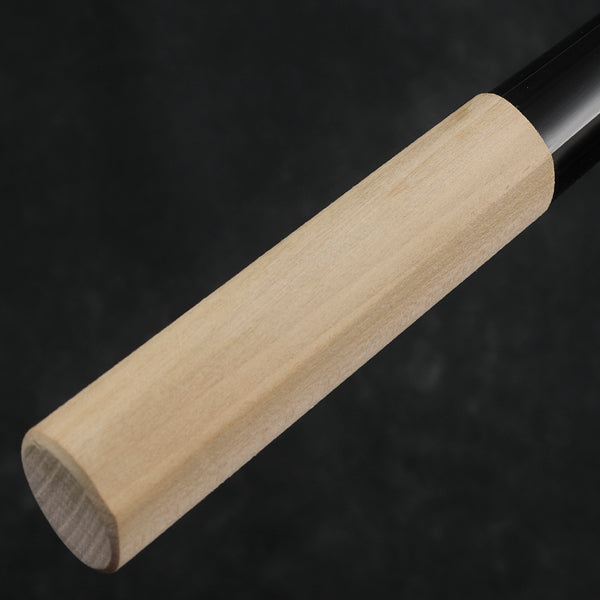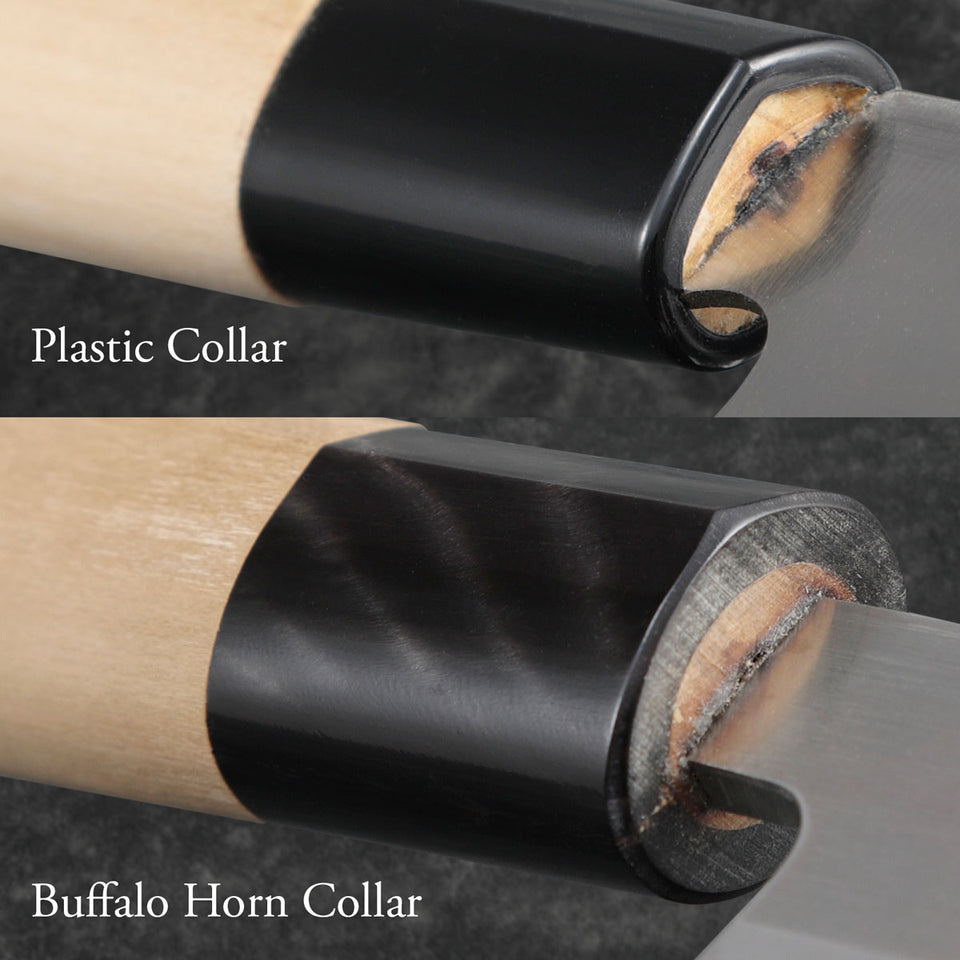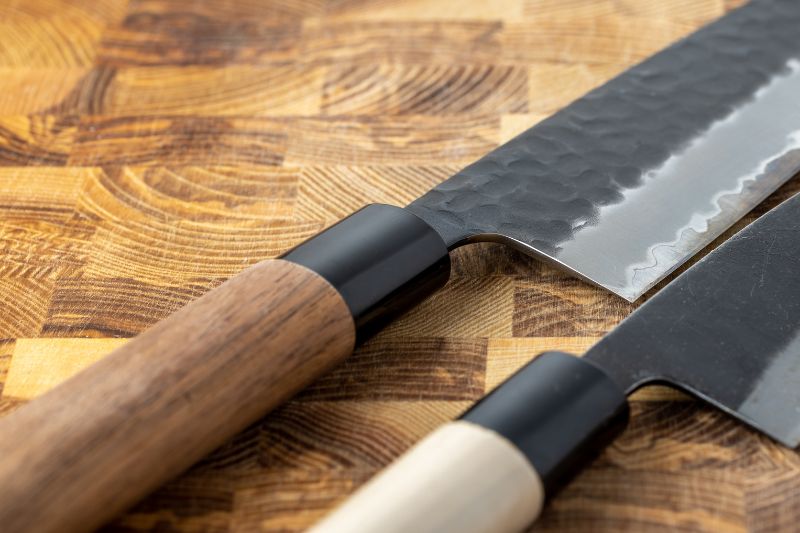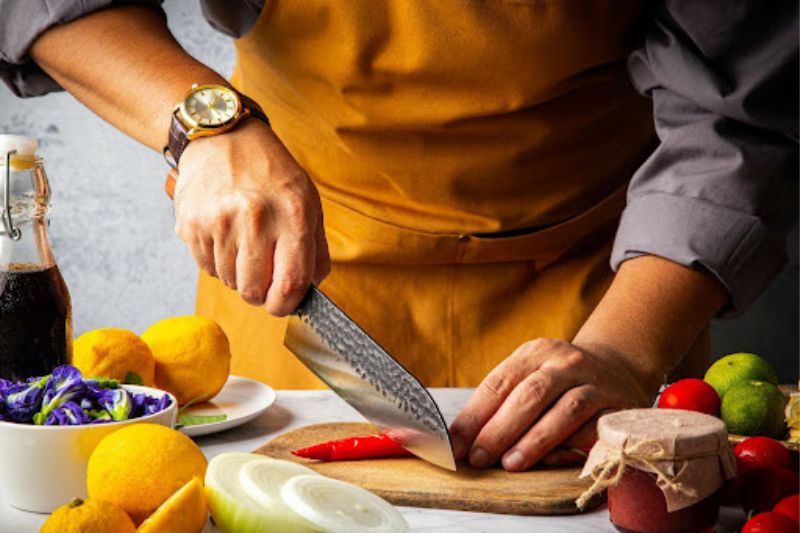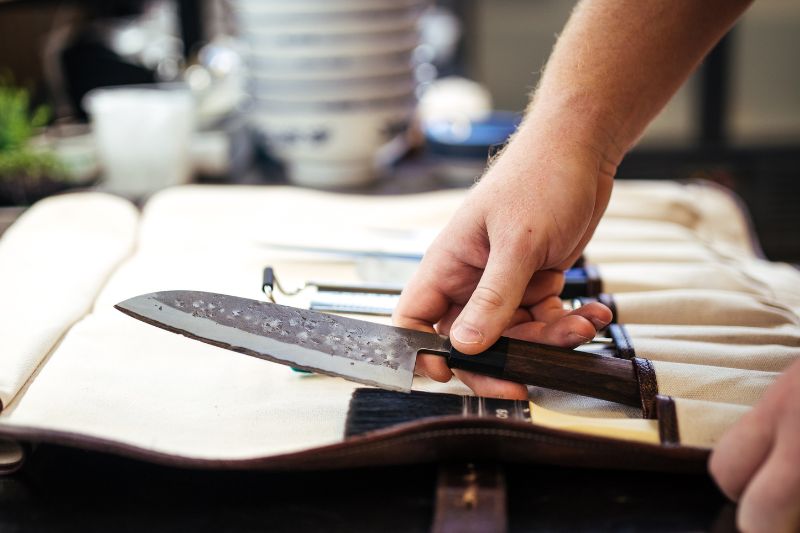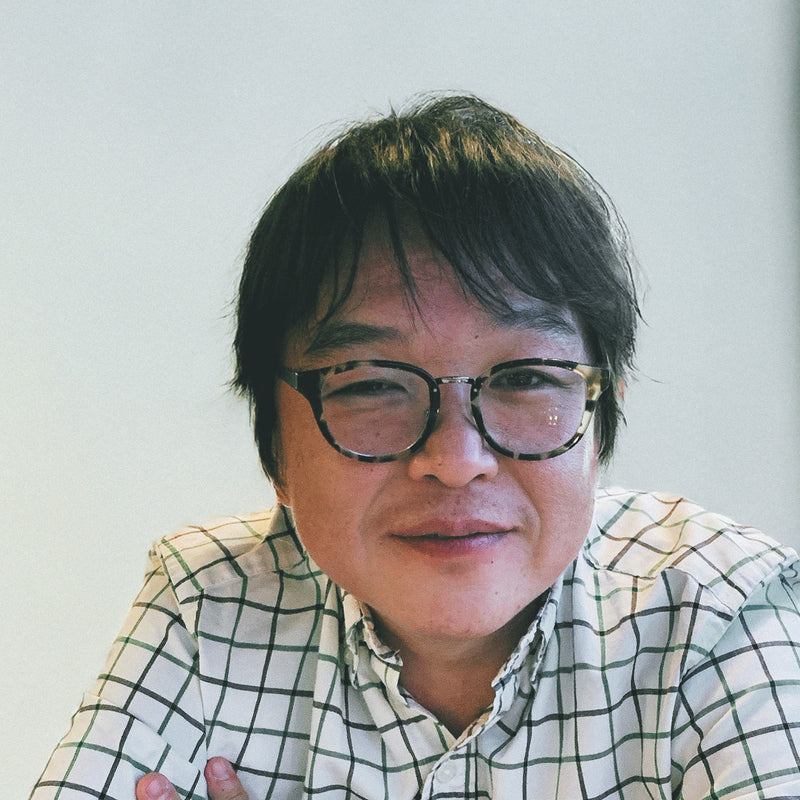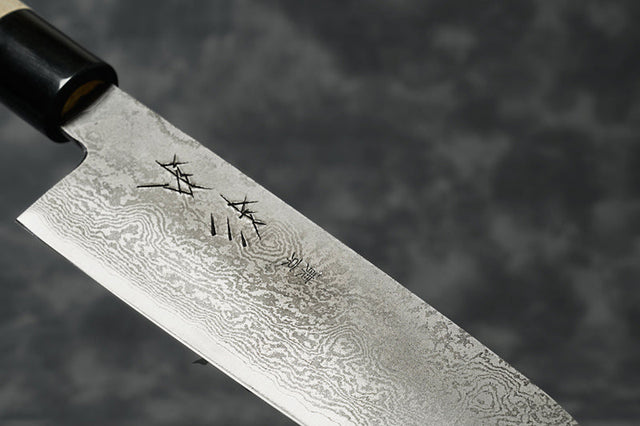
Thai Cleaver and some Japanese single bevel knives are made of high-carbon steel. We will find out their differences and see which knife is better on five rounds.
Before that, what is a Thai Cleaver?
A Thai cleaver, also known as a Thai chef's knife, or Thai vegetable cleaver, is a traditional Thai kitchen tool used for various cutting and chopping tasks in Thai cuisine. It is a versatile knife characterized by its rectangular shape and broad, heavy blade. The blade typically ranges from 6 to 8 inches long and is made of high-carbon steel. Thai cleavers often feature a slightly curved edge, allowing for a rocking motion while cutting. This rocking motion, combined with the weight of the blade, enables precise control and quick chopping.
The design of the Thai cleaver allows for efficient chopping and slicing of vegetables, fruits, and herbs commonly used in Thai cooking. The broad blade provides stability and helps transfer force from the hand to the cutting surface, making it suitable for mincing garlic, slicing meat, or chopping ingredients for stir-fries.
It's important to note that Thai cleavers are distinct from Chinese cleavers, which have a similar rectangular shape but are typically heavier and used for different purposes. Thai cleavers are primarily used for vegetables and herbs, while Chinese cleavers are designed for a broader range of tasks, including slicing, chopping, and even cleaving bones.
Let the battle begin!
A Japanese single bevel knife and a Thai cleaver are both knives, but they have distinct differences in design, purpose, and cultural origins. Here are the main differences between the two:
Round 1: Cutting Technique
Single bevel knives are designed for precision and specific cutting techniques. They are often used in Japanese culinary traditions, such as sushi and sashimi preparation. These knives excel at making clean and precise cuts, mainly when dealing with delicate ingredients. Thai cleavers, on the other hand, are more versatile for a wider range of cutting tasks, such as chopping, slicing, and mincing vegetables and herbs. The broad and heavy blade of the Thai cleaver facilitates efficient chopping and slicing of ingredients.

Japanese Single Bevel knives win for this round as cuts are precise, and food, especially fish, will still be in shape. Single bevel knives excel in precision and specific cutting techniques in Japanese cuisine, while Thai cleavers are versatile tools suitable for a range of cutting tasks in Thai cooking.
Round 2: Cultural Context
Single bevel knives are deeply rooted in Japanese culinary traditions and designed to meet Japanese cuisine's specific needs. Thai cleavers, as the name suggests, are associated with Thai cooking. They are designed to handle the ingredients and techniques commonly found in Thai recipes.
- Single Bevel Knife: Single bevel knives are deeply rooted in Japanese culinary traditions and are specifically designed to meet the needs of Japanese cuisine, such as sushi and sashimi preparation.
- Thai Cleaver: Thai cleavers are associated with Thai cuisine and are designed to handle the ingredients and techniques commonly used in Thai recipes.

Traditional Thai cleavers often have a wider bevel angle than Japanese knives, affecting their cutting performance and overall feel.
It’s a tie as both countries have many delicious cuisines!
Round 3: Sharpness
Single bevel knives designed for precise and delicate cuts are often ground to incredibly sharp edges. The single bevel on these knives allows for a more acute angle on the top or cutting edge, resulting in exceptional sharpness and precision. Japanese knife makers are renowned for their craftsmanship and attention to detail when sharpening their blades.
Thai cleavers, on the other hand, are typically designed for more robust and versatile cutting tasks. While they may not achieve the same razor-like precision as a well-sharpened single bevel knife, Thai cleavers can still be honed to very sharp edges. They are often sharpened to be durable and able to handle the demands of chopping and slicing through various ingredients commonly used in Thai cuisine.
Ultimately, the sharpness of a knife depends on the skill of the person sharpening it, the quality of the blade material, and its intended use. Both Japanese single bevel knives and Thai cleavers have the potential to be exceptionally sharp when properly maintained and sharpened by a skilled individual.
However, Japanese knives are often known for their exceptional sharpness compared to Thai cleavers. These knives are typically designed with thinner blades and more acute cutting edges. The blade geometry allows for a finer edge to be achieved, resulting in increased sharpness. The blade's thinness reduces the resistance encountered during cutting, making it easier to create and maintain a sharp edge.

Round 4: Strength
Thai cleavers often have thicker blades compared to Japanese single bevel knives. The added thickness provides more strength and durability, making them better suited for heavy-duty tasks such as chopping through bones or tougher ingredients. Japanese single bevel knives, on the other hand, are designed with a focus on precise cutting techniques and delicate ingredients, making them more suitable for intricate slicing and preparing fine cuts of fish or vegetables.
In terms of strength, Thai cleavers are generally considered to be stronger than Japanese single bevel knives.
While Thai cleavers are generally stronger, it's important to note that they may possess a different level of finesse and precision than Japanese single bevel knives. Each knife type has its own strengths and weaknesses, and its suitability depends on the specific cutting tasks and culinary traditions they are designed for.

Round 5: User-friendliness
Thai cleavers are commonly used for various tasks in Thai cuisine, including chopping through hard vegetables, herbs, and as already mentioned, even small bones. Their design and construction are intended to handle these demanding tasks.
Many chefs and home cooks appreciate the versatility of Japanese single bevel knives due to their ability to handle different cutting techniques and culinary tasks. However, it's essential to note that mastering the specific cutting techniques and handling single bevel knives may require practice and familiarity.
For this round, it would be easier, especially for beginners, to use Thai cleavers.
In summary, Japanese knives win regarding Cutting Technique and Sharpness, while Thai Cleavers excel in Strength and User-friendliness. Please choose one depending on your intended purpose and cuisine to cook.
Get Free Bonus Books

Sign up for free to the Japanese Knife Club to get advice and exclusive articles about how to choose Japanese Knives, and tips and tricks for using Japanese knives.
About the author
Kei Nishida
Author, CEO Dream of Japan
Certification: PMP, BS in Computer Science
Education: Western Washington University
Kei Nishida is a passionate advocate of Japanese craftsmanship, a writer, and the founder and CEO of Japanese Knife Co., Japanese Green Tea Co., and Japanese Coffee Co., all part of Dream of Japan.
His journey began with a mission to introduce the world to the exquisite flavors of Japanese green tea. Through Japanese Green Tea Co., he pioneered the import of premium tea grown in nutrient-rich sugarcane soil, earning multiple Global Tea Champion awards. He then expanded into the world of coffee, launching Japanese Coffee Co., the first company to bring Sumiyaki charcoal-roasted coffee to a global audience.
With a deep appreciation for Japanese artistry and tradition, Kei turned his attention to one of Japan’s most revered crafts: bladesmithing. Through Japanese Knife Co., he made handcrafted katana-style knives, created by a renowned katana maker, available outside Japan for the first time. These exceptional knives embody centuries of samurai sword-making expertise, blending tradition with modern functionality for chefs and collectors alike.
Kei’s journey continues as he uncovers and shares Japan’s hidden treasures—one sip, one blade, and one legacy at a time.


